In November 1888, the City of Portland accepted a small menagerie of animals from a former sailor who had set up shop in town. The City didn’t intend to start a zoo, but the citizens were captivated by the monkeys, bears and birds housed on the hillside above the burgeoning city.
By 1894, 300 mostly North American critters were attracting visitors to a slowly expanding zoo. After the 1905 Lewis & Clark Centennial Exposition, animals acquired from the exhibitors included a lion, leopard and polar bear, and some bison and elk. After a couple of minor shuffles, in 1959 the zoo settled into its current location in Washington Park with what was, at the time, state of the art exhibits.
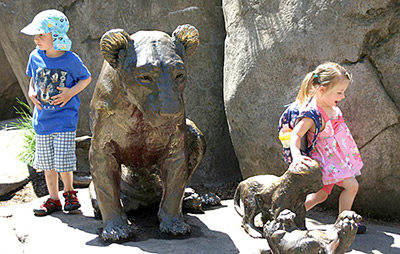 
Pathways and exhibits are landscaped with native Pacific Northwest plants, and more than 1,000 exotics fill the botanical gardens. Intriguing sculptures dot the grounds and a collection of weather vanes add points of interest.
The Oregon Zoo now sprawls across 64 acres, with five major sections—Great Northwest, Pacific Shores, Fragile Forests, Asia and Africa—containing 23 specialized exhibits. The 2,000 individual animals represent 240 different species of birds, mammals, reptiles, amphibians, fish and invertebrates, and include 22 endangered and 37 threatened species.
GREAT NORTHWEST
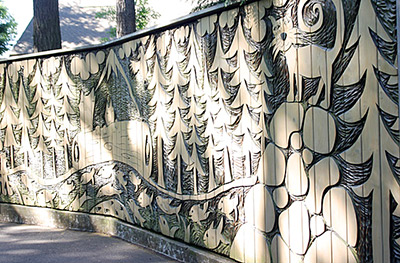 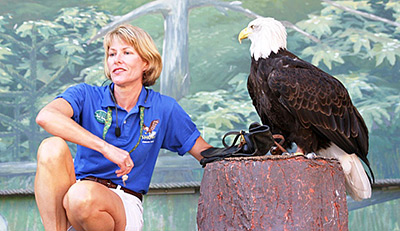
Beyond the Mountain Goats straddling the craggy ledges of the Cascade Crest exhibit, a sculpted undulating wall leads to the Great Northwest section, showcasing regional animals including Black Bears, Bobcats and Cougars. Anchoring the far corner of the Great Northwest, Eagle Canyon duplicates a complete watershed where North America’s native Bald Eagles, Coho Salmon and Rainbow Trout reside. As a sea eagle, they prefer large bodies of water rich with fish.
Cascade Stream & Pond provides an opportunity to watch Oregon’s State Animal, the Beaver, as well as River Otters and various species of Ducks in a naturalistic habitat. When the Zoo began designing more natural exhibits in the 1980s, this section won the top exhibit award from the American Association of Zoos and Aquariums.
In Spring 2014, a three-story Condors of the Columbia aviary opens. Largest in North America, it measures 4,900 square feet at the bottom slanting outward to 5,800 at the top. Providing room for short flights, the elevated viewing area should provide some amazing views of these endangered birds.
PACIFIC SHORES
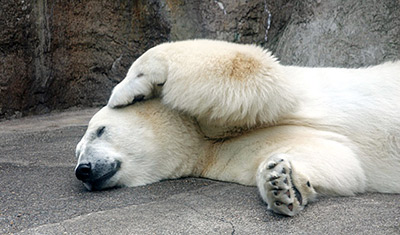
Biggest carnivore in the Pacific Shores section, the Polar Bears’ huge paws spread their weight to allow safe travel on thin ice and assist in swimming across large stretches of water. Thick fur provides traction and warmth and muffles their paw-steps from their prey. Long claws assist in capturing their meal, and prove invaluable for conquering the occasional itch.
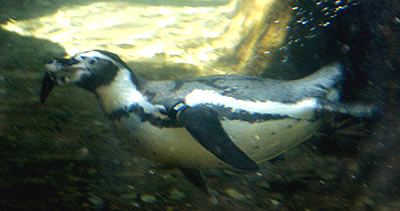 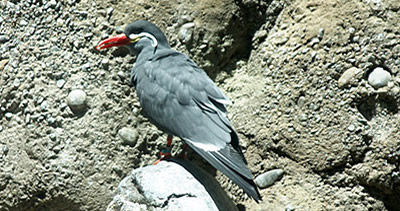 Underwater windows in the Penguinarium exhibit give a front row view of Humboldt Penguins zooming past up to 30 miles an hour, their backward-facing teeth firmly grasping a tasty meal. The Zoo has one of the largest groups of Humboldts in the U.S. The Zoo’s first penguins, a group of Emperors and Adelies, arrived in 1957 but had to be temporarily housed in a Portland park swimming pool until their new home was ready. Native to the Humboldt’s home along the coast of Chile and Peru, Inca Terns are the perfect roommates in the Penguinarium. The heavy, solid bones of the Humboldts assist in diving for their food, while the Terns snatch fish off the top of the water. Underwater windows in the Penguinarium exhibit give a front row view of Humboldt Penguins zooming past up to 30 miles an hour, their backward-facing teeth firmly grasping a tasty meal. The Zoo has one of the largest groups of Humboldts in the U.S. The Zoo’s first penguins, a group of Emperors and Adelies, arrived in 1957 but had to be temporarily housed in a Portland park swimming pool until their new home was ready. Native to the Humboldt’s home along the coast of Chile and Peru, Inca Terns are the perfect roommates in the Penguinarium. The heavy, solid bones of the Humboldts assist in diving for their food, while the Terns snatch fish off the top of the water.
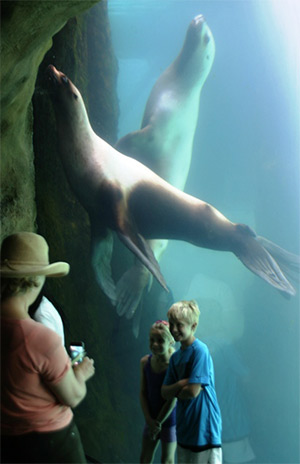 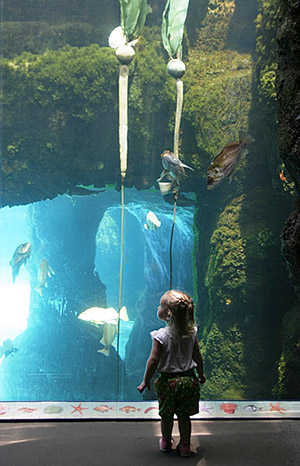
Steller Cove brings a piece of the Oregon Coast up close for captivating views of native mammals and fish weaving through sun-dappled beds of kelp. Steller Sea Lions roam the coastlines on both sides of the North Pacific, with America’s largest sea cave rookery situated on the Oregon Coast. Friendly and inquisitive, they're all happy to pose for a photo.
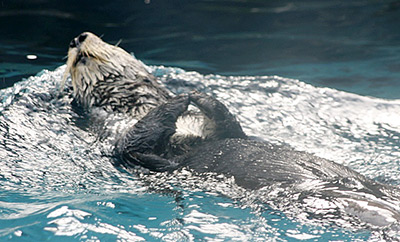
Nearly hunted to extinction and currently classified a threatened species, the Southern Sea Otter uses webbed hind feet as flippers to swim and dive. Playful and intelligent, they enjoy entertaining onlookers as they alternately paddle about on the surface, then dive through strands of kelp to peer through the window at Zoo visitors.
 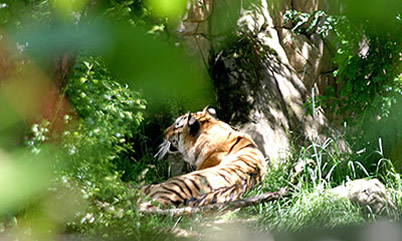 Several species of Lorikeets roam the open-air aviary at Lorikeet Landing. Visit before their daily allotment of nectar, which comprises 30% of their diet, has run out and you too can have a buddy like this Rainbow Lorikeet. Amur Tigers share the trait of each tiger’s face as distinctive as a fingerprint, and the body stripes are different from side to side. Several species of Lorikeets roam the open-air aviary at Lorikeet Landing. Visit before their daily allotment of nectar, which comprises 30% of their diet, has run out and you too can have a buddy like this Rainbow Lorikeet. Amur Tigers share the trait of each tiger’s face as distinctive as a fingerprint, and the body stripes are different from side to side.
FRAGILE FORESTS
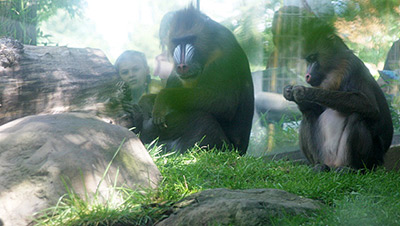
Busy storing food in their cheek pouches, these Mandrills and their Chimpanzee buddies can look forward to a new Primate Habitat in 2018. Larger and designed with “treeways” allowing longer movement possibilities, it will more closely duplicate their native West African habitat.
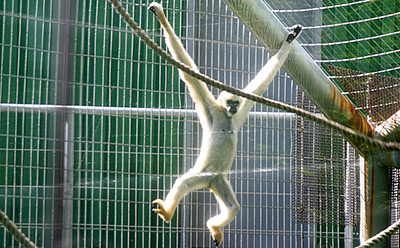
In the Red Ape Reserve, Sumatran Orangutans and White-Cheeked Gibbons roam an indoor/outdoor exhibit. Gibbons can swing across distances up to 50 feet and as quickly as 35 mph, fastest of all tree-dwelling mammals except bats. Born blond and turning black as juveniles, at maturity females return to the light color and males remain black with the namesake white cheeks.
ASIA

Malayan Sun Bears get their name from a white or orange mark on their chest and muzzle. Also known as Honey Bears, their long, curved claws make easy work of slashing open bee hives and devouring the bees and their honey.
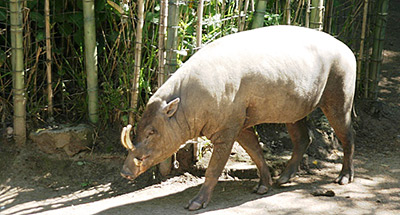
Sharing the Island Pigs of Asia exhibit with Visayan Warty Pigs, the nearly hairless Babirusa Pigs have a skin care regime that includes mud “facials” and regular baths. This is one of only a handful of U.S. zoos that can count Warty Pigs among their tenants.
Portland’s first Asian elephant arrived in 1953, named Rosey in honor of her new home in the City of Roses. As she made her way from the ship that brought her from Thailand, 100,000 people cheered along the route from the dock to the west hills. The birth of Packy in 1962, the first in the U.S. in 44 years, was featured in Life and Readers Digest magazines and made international headlines. The Zoo is famous for what has become the world’s most successful elephant breeding program.
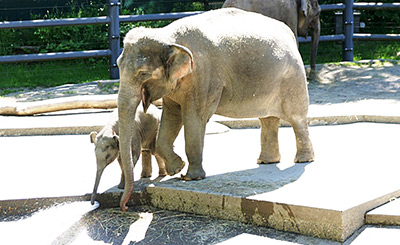
The newest addition to the family is Lily, born late November 2012 and seven months old in the image above, with mother Rose-Tu close by. Construction is underway for Elephant Lands to open in 2015, expanding their exhibit from 1.5 to 6.25 acres and providing a variety of terrain in which to move about and congregate as they would in the wild.
AFRICA
Take a brief stroll through the Howard Vollum Aviary and enjoy the sounds and sights of colorful birds flitting among the striking flora of an African rainforest. Have a bite of lunch in the adjacent AfriCafe where you can pick a table overlooking the action in the aviary.

Lions, cheetahs, caracal, mongoose and other carnivores populate the Predators of the Serengeti exhibit, which won the American Association of Zoos and Aquariums’ top award for new exhibits after it opened in 2010. These African Lions will participate in a new breeding program, part of the AAZA’s Species Survival Plan.
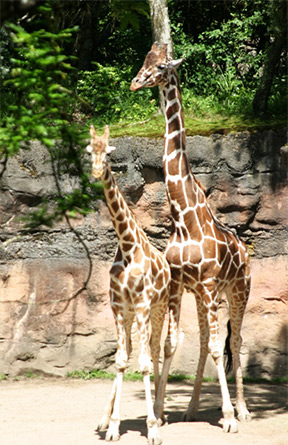
Browsing among the trees of the Africa Savanna exhibit, Reticulated Giraffe are named for the pattern of their skin which is “reticular” or similar to a net in appearance. Rhinos, Hippos, Gerenuks, Gazelles, DeBrazza’s Monkeys and many other denizens can be found in this exhibit. A future Rhino Habitat will bring back the Zebra and include other critters.
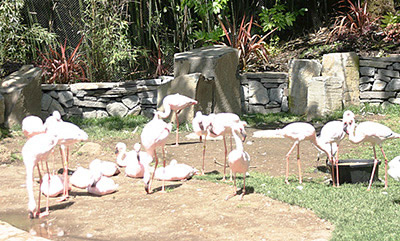 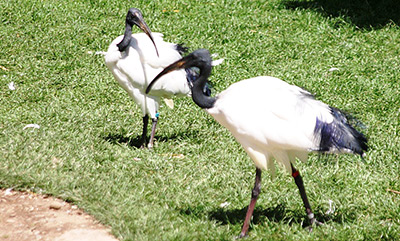 Gathering around the waterholes in the Africa Rainforest exhibit, Lesser Flamingos get their pink coloring from the spirulina bacteria they eat. Smallest of the flamingo species, they can’t smell and can barely taste. Strutting nearby, Sacred Ibis were revered by the ancient Egyptians who sometimes mummified and buried them with their pharaohs. Gathering around the waterholes in the Africa Rainforest exhibit, Lesser Flamingos get their pink coloring from the spirulina bacteria they eat. Smallest of the flamingo species, they can’t smell and can barely taste. Strutting nearby, Sacred Ibis were revered by the ancient Egyptians who sometimes mummified and buried them with their pharaohs.
ZOO TRAIN
Any visit to the Oregon Zoo should include a ride on the narrow gauge Washington Park & Zoo Railway. In operation since 1958, it proved so popular that two years later a 1.5 mile extension to Washington Park was surveyed by the Southern Pacific Railroad and constructed with the help of, among others, what would become part of the Burlington Northern & Santa Fe Railway.
  Three passenger trains run on busy days: the diesel-powered Zooliner (above left), a half-size replica of General Motor’s Aerotrain; the Centennial Steam Train (above right), built for the 1959 Oregon Centennial celebration; and the Oregon Express which incorporates parts from the original 1958 Circus Train. Three passenger trains run on busy days: the diesel-powered Zooliner (above left), a half-size replica of General Motor’s Aerotrain; the Centennial Steam Train (above right), built for the 1959 Oregon Centennial celebration; and the Oregon Express which incorporates parts from the original 1958 Circus Train.
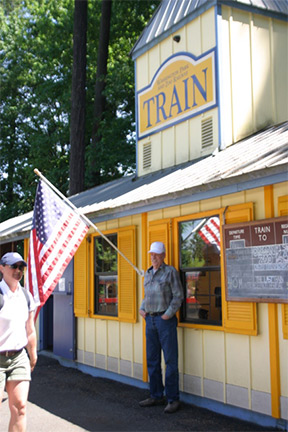
The train makes about a ten-minute layover at the Washington Park depot, enough time to snap some scenic photos of the International Rose Test Gardens and city. If you wish to visit the nearby Japanese Gardens or Rose Gardens, both within easy walking distance, they’ll stamp your hand for a later return trip.
Through the late 1970s, most U.S. mail was transported by train and would be cancelled en route with a stamp indicating the railway. In 1961, the Washington Park and Zoo Railway was one of the first recreational railroads to be issued its own postmark. It is now the last operating U.S. railroad with its own authorized postmark to continually provide mail service. Deposit a card in a mail box at the Zoo and it will be hand-cancelled with what has become a collector’s item.
VISITING
Visitors can bring food and non-alcoholic beverages into the Zoo, or enjoy an extensive menu at the Cascade Grill, a quick snack from one of the Snack Carts, a burger or hot dog at AfriCafe, or grab an item at the BearWalk Café and enjoy at a picnic table on the terraced concert lawn or inside the AfriCafe.
The terraced concert grounds are the venue for an outdoor Summer Concert series featuring top-name headliners. During the holidays, over a million LED Zoolights transform the Zoo into a wonderland. Wheelchair, stroller and electric scooter rentals are available.
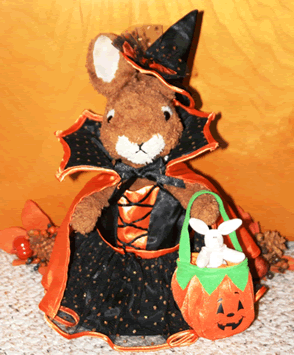
|